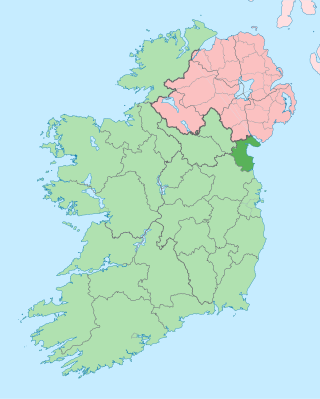
County Louth is a coastal county in the Eastern and Midland Region of Ireland, within the province of Leinster. Louth is bordered by the counties of Meath to the south, Monaghan to the west, Armagh to the north and Down to the north-east, across Carlingford Lough. It is the smallest county in Ireland by land area and the 17th most populous, with just over 139,100 residents as of 2022. The county is named after the village of Louth. Louth County Council is the local authority for the county.

Sligo Abbey was a Dominican convent in Sligo, Ireland, founded in 1253. It was built in the Romanesque style with some later additions and alterations. Extensive ruins remain, mainly of the church and the cloister.

Carlingford is a coastal town and civil parish in northern County Louth, Ireland. For the purposes of local government, the town is part of the Dundalk Municipal District. It is situated on the southern shore of Carlingford Lough with Slieve Foy mountain as a backdrop, sometimes known as Carlingford Mountain. It is the main town on the Cooley Peninsula. Located on the R176/R173 roads between Greenore and Omeath village, Carlingford is approximately 27 km (17 mi) north east from Dundalk, 90 km (56 mi) north of Dublin and 11 km (7 mi) south of the border with Northern Ireland. Carlingford won the Irish Tidy Towns Competition in 1988.
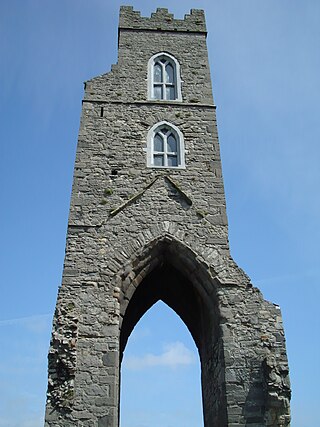
Magdalene Tower is a landmark located at the highest point of the northern part of Drogheda, County Louth, in Ireland. All that now remains of the once important Dominican Friary is the belfry tower. Lucas de Netterville, then Archbishop of Armagh, founded the monastery in about 1224.

Boyle Abbey is a ruined Cistercian friary located in Boyle, County Roscommon, Ireland. It was founded by Saint Malachy in the 12th century.
Events from the year 1539 in Ireland.
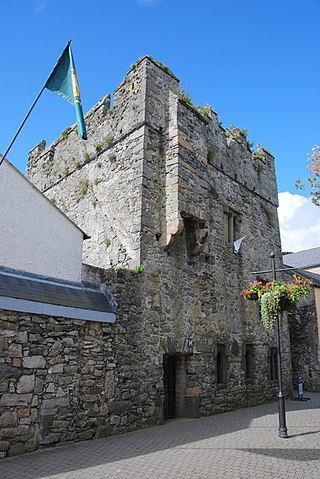
The Mint is a fortified house and National Monument located in Carlingford, County Louth, Ireland.

St. Mochta's House is a medieval oratory and National Monument in County Louth, Ireland.

Dromiskin Monastery is a medieval monastery and National Monument located in Dromiskin, County Louth in Ireland.
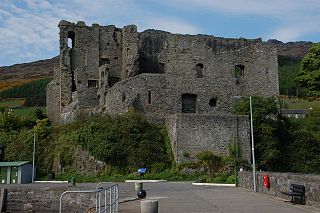
King John's Castle, also known as Carlingford Castle, is an enclosure castle and National Monument located in Carlingford, County Louth, Ireland.

Strade Abbey is a former Franciscan/Dominican monastery and National Monument located in County Mayo, Ireland.

Roscommon Abbey is a former Dominican Priory and National Monument located in Roscommon, Ireland.

The Priory of the Holy Cross, also called Rathfran Friary or Rathfran Priory, is a former Dominican Friary and National Monument located in County Mayo, Ireland.

Castlelyons Friary is a former Carmelite Priory and National Monument located in County Cork, Ireland.
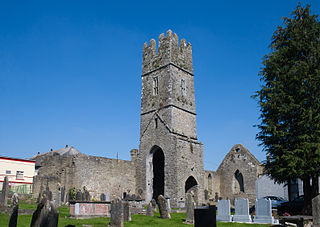
Roscrea Friary is a ruined medieval Franciscan friary and National Monument located in Roscrea, County Tipperary, Ireland. It is on Abbey Street, in the west end of Roscrea, on the north bank of the River Bunnow. The Friary was founded in the 15th century by Greyfriars (Franciscans) and later destroyed by British soldiers. What remains are the north and east walls and the bell-tower.

Portumna Abbey is a medieval Cistercian friary and National Monument located in Portumna, Ireland.

Kinalehin Friary, originally a medieval charterhouse or Carthusian monastery and later a Franciscan friary, is a National Monument located in County Galway, Ireland.
Athy Priory is a former friary of the Dominican Order located in Athy, Ireland.


















